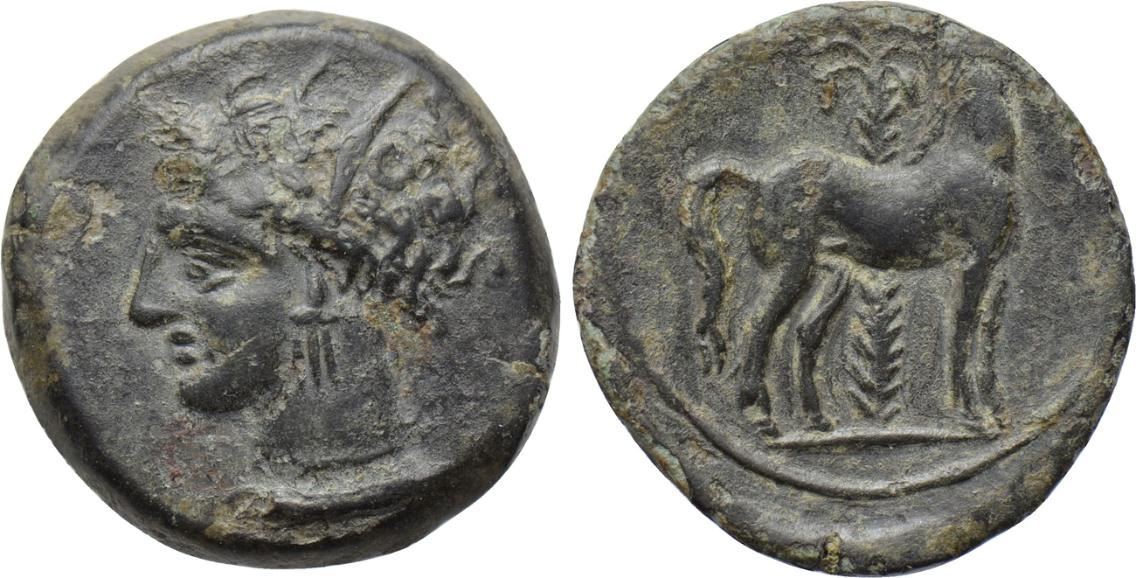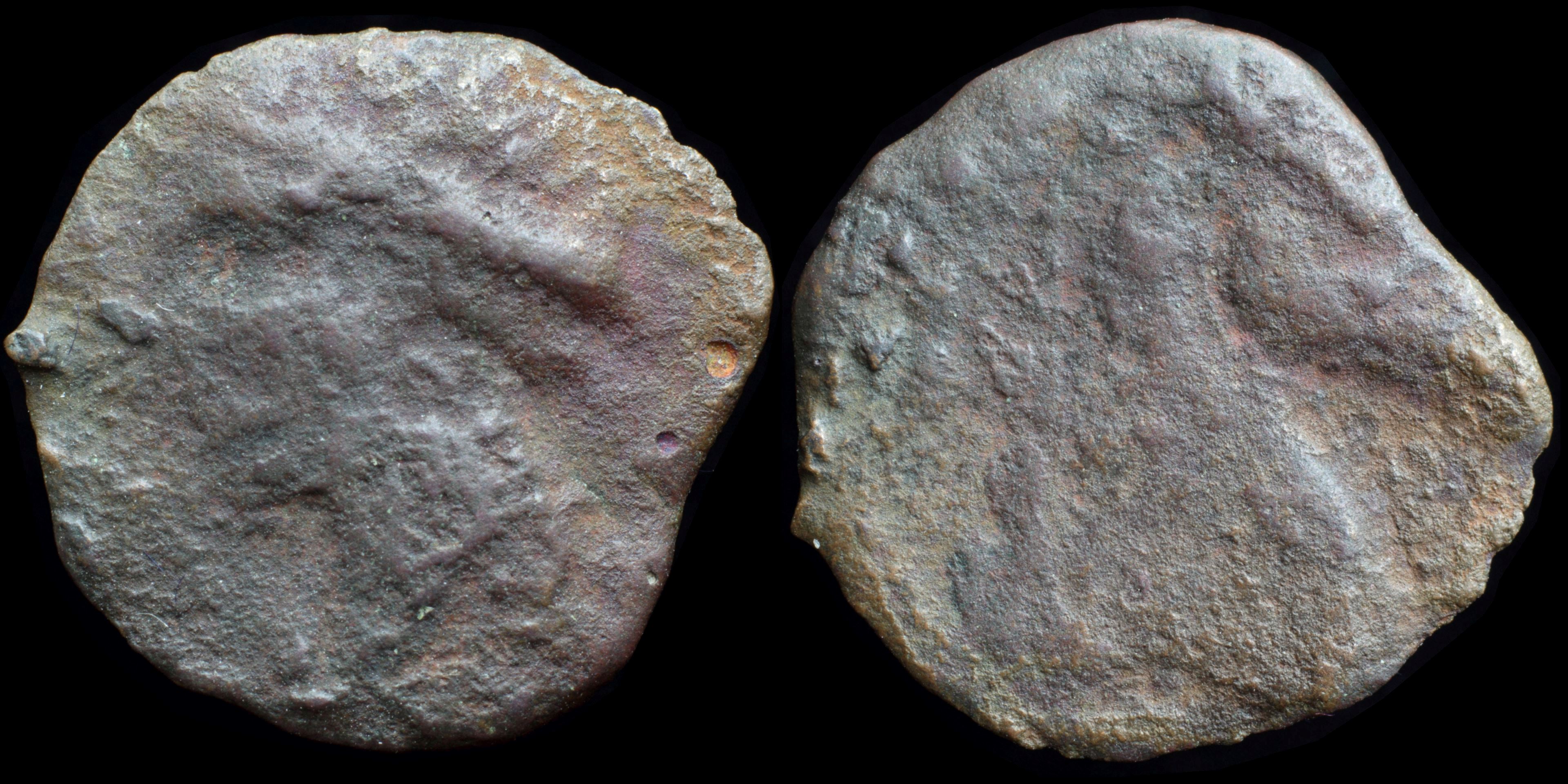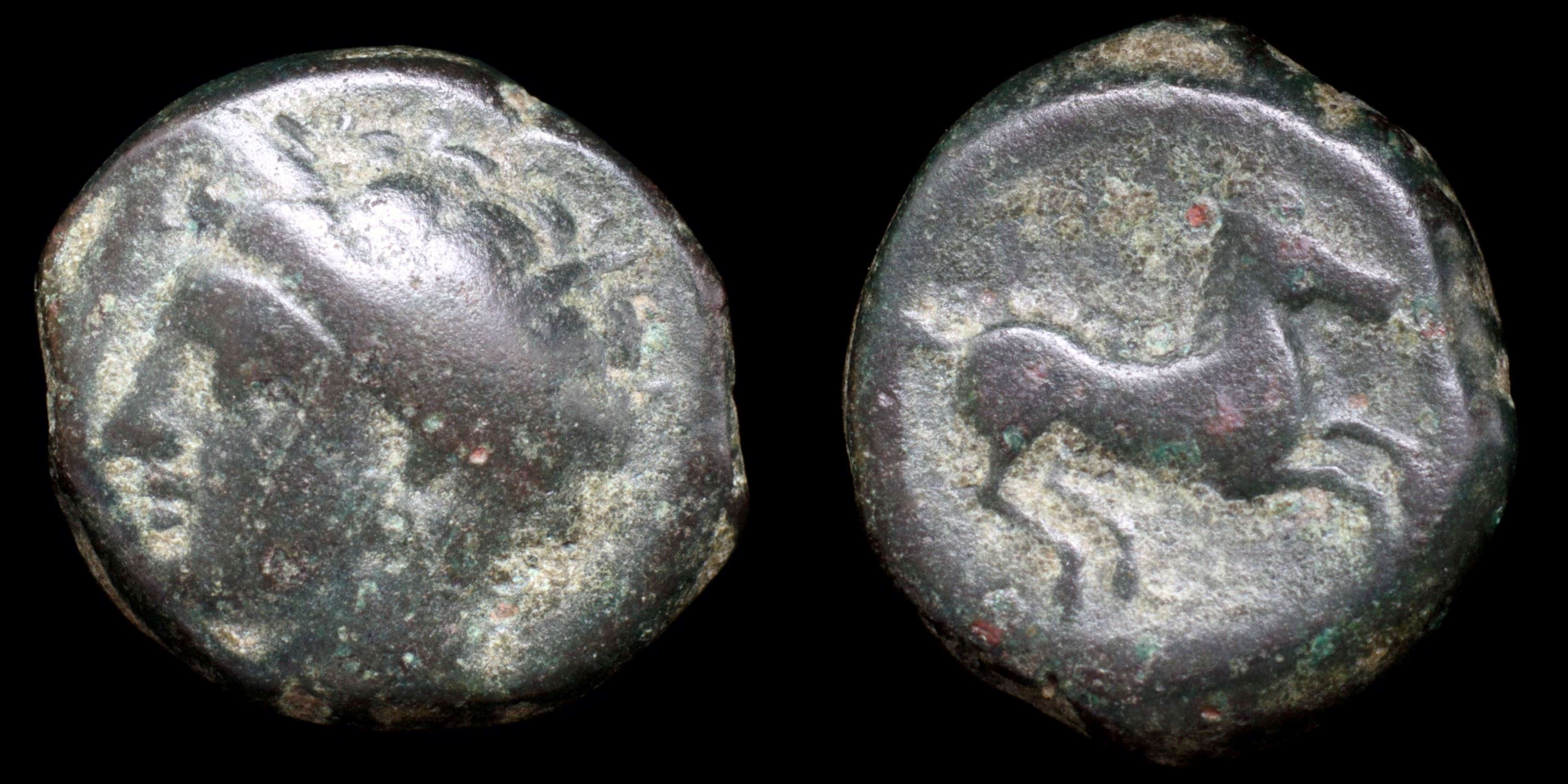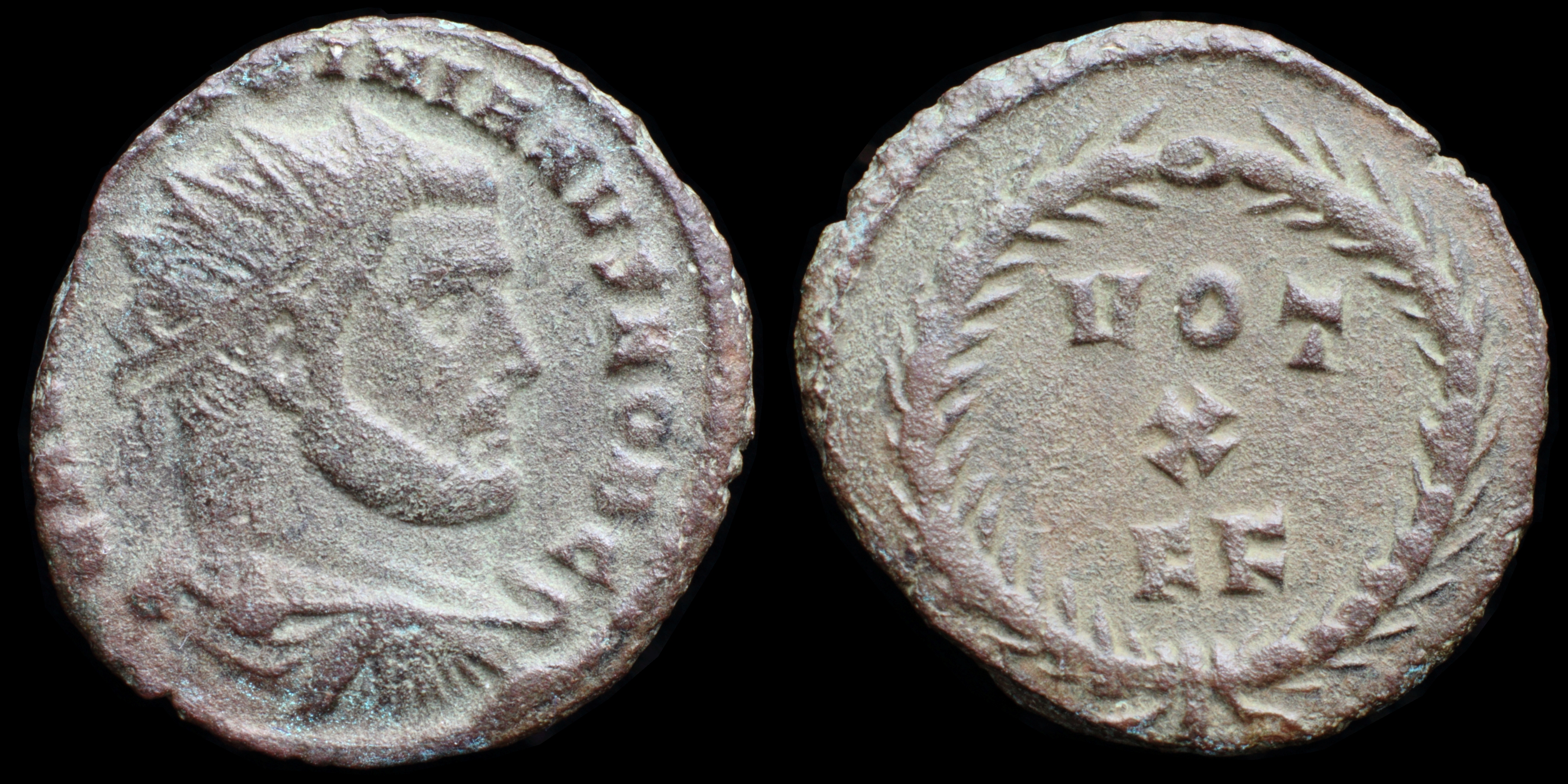The ancient city was destroyed by the Roman Republic in the Third Punic War in 146 BC then re-developed as Roman Carthage, which became the major city of the Roman Empire in the province of Africa.
The mint of Carthage struck coins during the tetrarchy, being opened during a military campaign of Maximianus. Maxentius moved it to Ostia. Shortly after the mint was re-opened by the usurper Domitius Alexander, striking crude coins from dies obviosuly cut by ad-hoc workers. Carthage struck coins again under the Vandals.
Modern location: Tunis, North Africa

Reverse: Horse standing right; in background, date palm with fruit; small pellet in upper left field
Die Orientation: 0 H
Weight: 2.7 g

Reverse: head of horse right
Die Orientation: -
Weight: 2.33 g

Reverse: Horse galloping right
Die Orientation: -
Weight: 6 g

Reverse: horse standing right, lifting front leg
Die Orientation: -
Weight: 15.4 g
.jpg)
Reverse: VOT-XX-FK in three lines within wreath. (FK is the mintmark).
Die Orientation: 0 H
Weight: 2.2 g

Reverse: Legend within wreath; VOT / X / F K
Die Orientation: -
Weight: 3.1 g

Reverse: Monogram of Justinian II
Die Orientation: 0 H
Weight: 1 g
Commonly referred to as “Gepids siliqua”
